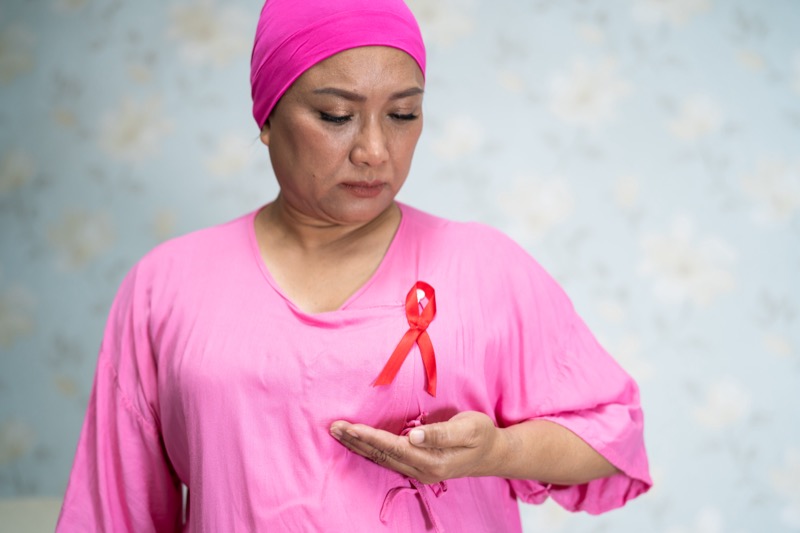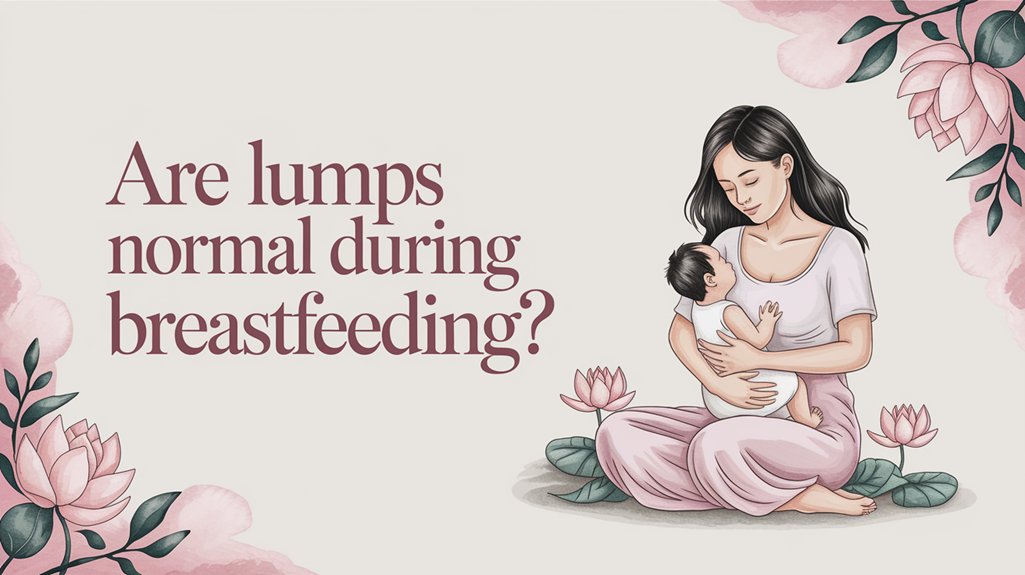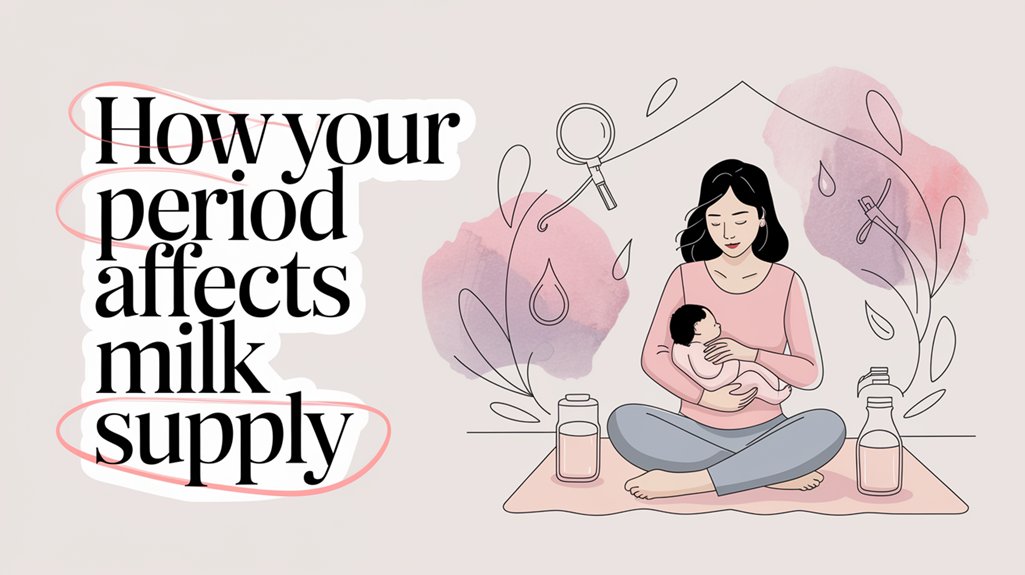Most lumps that develop during breastfeeding are normal and harmless. Finding a lump in your breast while breastfeeding can be concerning, but understanding what causes these lumps, including breast infections, and how to manage them can help ease your worries. This article explains the common types of breast lumps you might experience while breastfeeding, how to address them at home, and when to see a doctor.
Quick Action Guide for Breast Lumps
If you’re experiencing a breast lump while breastfeeding right now:
- For a hard, painful lump in one area: Continue breastfeeding, apply warm compresses before feeding, and gently massage toward the nipple – likely a blocked duct.
- For overall breast fullness and firmness: Feed frequently, use cold compresses after feeding – likely engorgement.
- For a painful lump with fever or flu-like symptoms: Contact your doctor today while continuing to breastfeed – possible mastitis.
- For any lump that doesn’t improve in 48 hours: Seek medical advice.
Are Breast Lumps During Breastfeeding Normal?
Most lumps that develop while breastfeeding are benign and related to milk flow issues. Common harmless causes include:
- Blocked milk ducts (most common)
- Breast engorgement
- Mastitis (requires medical attention)
- Galactoceles (milk-filled cysts)
While these lumps can make breastfeeding challenging and sometimes painful, they typically resolve with proper care and continued breastfeeding.
Understanding Breast Lumps
Breast lumps can understandably cause concern for breastfeeding mothers. However, it’s important to know that most breast lumps are benign and manageable. Common causes include a blocked milk duct, which can lead to a tender lump as milk builds up behind the blockage. Mastitis, a breast infection, can also cause painful lumps, often accompanied by redness and warmth. In some cases, untreated mastitis can develop into a breast abscess, a painful collection of pus that requires medical attention. While rare, a breast lump can sometimes be a sign of breast cancer. However, the majority of breast lumps during breastfeeding are harmless and can be treated with home remedies or medical care.

Common Types of Breast Lumps During Breastfeeding
Blocked Milk Ducts
A blocked milk duct, also known as a plugged milk duct, is one of the most common causes of breast lumps during breastfeeding. Milk ducts are small tubes that carry milk from the milk-producing glands to the nipple. When a duct becomes blocked, milk builds up behind the blockage, creating a small, tender lump.
Signs of a blocked milk duct:
A small, hard lump in the breast
Tenderness or pain in one area
Milk flow may decrease from the affected breast
The area might appear red or feel warm
Most blocked ducts clear up on their own within 24-48 hours with continued breastfeeding. Keeping the milk flowing is key to resolving a blocked duct.
How to clear a blocked duct:
Continue breastfeeding, starting with the affected breast
Position your baby so their chin points toward the blocked area
Apply a warm compress before feeding
Gently massage the lump toward the nipple while feeding
Wear loose-fitting bras and clothing
Breast Engorgement
Breast engorgement happens when your breasts become too full of milk. This typically occurs when your milk first comes in, if you miss a feeding or during the weaning process. Engorgement can temporarily affect milk supply, making it important to continue feeding according to the baby’s needs to help restore milk supply quickly.
Signs of engorgement:
Both breasts feel full, firm, and heavy
Breasts may be warm and uncomfortable
Skin may appear tight and shiny
Flattened nipples that make it harder for baby to latch
Managing engorgement:
Feed your baby frequently
Express a small amount of milk before feeding if the breast is too firm for baby to latch
Use cold packs after feeding to reduce swelling
Wear a supportive bra that’s not too tight
Mastitis
Mastitis is a breast infection that can cause a painful lump and localised breast inflammation. It often develops from a blocked duct that hasn’t cleared or from bacteria entering the breast through a cracked nipple.
Signs of mastitis:
A hard, painful lump in the breast
Redness and warmth in one area
General feeling of illness
Fever (38°C/100.4°F or higher)
Chills and body aches
These flu-like symptoms indicate the seriousness of the infection.
If you think you have mastitis, contact your doctor. Mastitis needs prompt treatment, usually with antibiotics, but you should continue breastfeeding to help clear the infection.
Breast Abscesses
A breast abscess is a painful collection of pus that forms when a breast infection isn’t treated or doesn’t respond to treatment. This is less common but requires medical attention. A breast abscess can also affect the surrounding breast tissue, making the area feel more swollen and tender, and potentially complicating the detection of other lumps.
Signs of a breast abscess:
A painful, swollen lump that may feel like it contains fluid
Severe pain in the breast
Redness and heat in the area
Fever and feeling very unwell
A doctor will need to drain the abscess and prescribe antibiotics. Even with an abscess, continuing to breastfeed (from the unaffected breast) is usually recommended.
Galactoceles
A galactocele is a milk-filled cyst that can form when a milk duct is blocked and then sealed off. It’s harmless but may not go away until after you finish breastfeeding.
Signs of a galactocele:
A smooth, round, movable lump
Usually painless
May change in size after feeding
Most galactoceles don’t need treatment unless they become uncomfortable or infected.
Breast Pain and Breastfeeding
Breast pain is a frequent issue for breastfeeding mothers, often linked to breast engorgement, nipple pain, or general discomfort. Engorgement occurs when your breasts become overly full of breast milk, which can happen if you miss a feeding or during the initial days of breastfeeding. This can make your breasts feel hard, heavy, and painful. To alleviate engorgement, try expressing a small amount of milk by hand before feeding to soften the breast and make latching easier. Ensuring your baby is properly positioned and attached can also help prevent and relieve engorgement. Frequent feeding is key to keeping the milk flowing and reducing breast pain.
How to Get Rid of Hard Lumps While Breastfeeding
When you discover a hard lump in your breast, these steps can help resolve it:
Apply warm compresses: Cover a towel with warm (not hot) water and apply it to the affected area for 10-15 minutes before feeding. The warmth helps to stimulate milk flow and reduce inflammation.
Massage technique: While your baby feeds, gently massage the affected area, starting behind the lump and working toward the nipple. This helps move the milk past the blockage.
Hand express: After feeding, try hand expressing a small amount of milk to ensure the breast empties completely.
Position your baby properly: Position your baby with their chin pointing toward the blocked area to help drain that specific part of the breast.
Clean hands before feeding: Always wash your hands with warm water before touching your breasts or feeding your baby to prevent introducing bacteria.
Stay hydrated: Drink plenty of water to maintain good milk flow.
How Long Does It Take for Breastfeeding Lumps to Go Away?
Most blocked milk ducts resolve within 24-48 hours with proper care and continued breastfeeding. However, the timeline can vary based on several factors:
The severity of the blockage
How quickly treatment begins
How frequently the baby feeds
The effectiveness of drainage techniques
Some mothers find relief within hours after starting treatment, while others might need a few days for the lump to disappear completely. During this time, you might notice an increase in milk production as the blockage clears.
If a lump persists for more than a few days despite home treatment, it’s important to consult with a healthcare provider.
How to Tell the Difference Between a Clogged Milk Duct and a Concerning Lump
Physical Characteristics and Symptoms
Clogged Milk Ducts:
Feel soft to dense, often with a tender sensation
Have a localized area of redness and warmth
May show a small white dot or blister (milk bleb) at the nipple opening
Often affect only one part of the breast
Milk may appear thicker or have a grainy consistency
Breast feels full even after nursing
Pain typically decreases after feeding or expressing milk
Changes in appearance or feeling with feeding
Localised breast inflammation may present as sore lumps or tender areas in the breast, which can lead to conditions like mastitis if untreated
Concerning Breast Lumps:
Often firm with irregular shapes and less smooth edges
May be painless (which is why regular self-exams are important)
Feel harder with clearly defined edges, sometimes like a pebble
Become less movable over time and may feel fixed to surrounding tissue
Most commonly appear in the upper, outer part of the breast, possibly extending to the armpit
Don’t change with feeding patterns
Persist over time without improvement
May cause skin changes like dimpling or puckering
Remember that while most lumps during breastfeeding are benign and related to milk production, a healthcare provider should evaluate any persistent lump.
Breast Cancer and Breastfeeding

While breast cancer is rare in breastfeeding mothers, it’s still important to be aware of the symptoms. Interestingly, breastfeeding can actually help reduce the risk of developing breast cancer. However, if you notice a lump in one or both breasts, nipple discharge, or changes in breast size, it’s crucial to seek medical attention. These symptoms could indicate breast cancer, which can be treated with surgery, chemotherapy, or radiation therapy. Early detection is vital for successful treatment, so don’t hesitate to consult your doctor if you have any concerns.
Red Flags for Breast Cancer
Certain symptoms should prompt immediate medical attention as they could be red flags for breast cancer. These include a new lump or a change in an existing lump, nipple changes such as inward turning or unusual discharge, and redness, swelling, or warmth in the breast. A lump that feels hard or different from the rest of your breast tissue, especially if it persists over time, is also concerning. Early detection and treatment are crucial for the best outcomes, so if you notice any of these symptoms, contact your healthcare provider promptly.
When to See a Doctor
While most breast lumps during breastfeeding are not serious, some situations require medical attention:
Lumps that don’t improve after 24-48 hours of home treatment
Severe pain that affects your ability to breastfeed
Fever of 38°C (100.4°F) or higher
Redness that spreads or worsens
Pus or blood in your milk
A lump that appears separate from breastfeeding issues
Any lump that persists after weaning
Flu-like symptoms such as fever, chills, and body aches
Your doctor might examine the lump, ask about your symptoms, and possibly recommend an ultrasound to determine the cause of the lump.
Caring for Your Breast Health
Regular Self-Checks

Even while breastfeeding, it’s good to be familiar with how your breasts normally feel so you can notice changes. The best time to check your breasts is right after a feeding when they’re as empty as possible.
What Medical Professionals Recommend
Lactation consultants recommend continuing to breastfeed through most lump issues. The Academy of Breastfeeding Medicine suggests that emptying the breast regularly is the most effective way to address most breastfeeding-related lumps.
According to breastfeeding medicine specialists, antibiotics are only necessary for clear cases of mastitis with fever and systemic symptoms, not for simple blocked ducts.
The American Academy of Pediatrics notes that while breast lumps can be concerning, most that occur during lactation are related to the normal physiology of milk production and typically resolve with proper breastfeeding techniques and care.
Prevention Tips
These practices can help prevent many common breastfeeding lumps:
Feed your baby frequently and don’t skip feedings
Make sure your baby has a good latch
Change feeding positions regularly
Avoid tight bras and clothing that press on the breasts
Fully drain each breast during feedings
Stay hydrated
Consider seeing a lactation consultant if you have recurring issues
Frequently Asked Questions About Breast Lumps While Breastfeeding
Conclusion
Breast lumps during breastfeeding are common and usually not a cause for worry. Most lumps are related to the natural processes of milk production and will resolve with proper care and continued breastfeeding. However, if you’re unsure about a lump or experience pain, fever, or other concerning symptoms, don’t hesitate to contact your doctor right away. Your health and peace of mind are important for both you and your baby.
It’s always better to have a healthcare provider check any lump you’re concerned about rather than waiting to see if it goes away. This is especially true if the lump is painful, growing, or accompanied by other symptoms like fever or redness.
Remember that while this article provides general information, it’s not a substitute for medical advice. Every breastfeeding journey is unique, and getting personalized support from healthcare providers can make all the difference in your breastfeeding experience.








